|
Our rainy day business is making rather special doors. We locate particularly interesting slabs with a sculptural style, then surround them with glass in a frame. It has taken us years to perfect the technique and develop joints that can be disassembled should the glass need replacing.
A door is something that defines the character of your home. You pass it and touch it more than any other part of the house. If it is a pleasing piece of natural sculpture, it can be a constant joy.
|

|
|
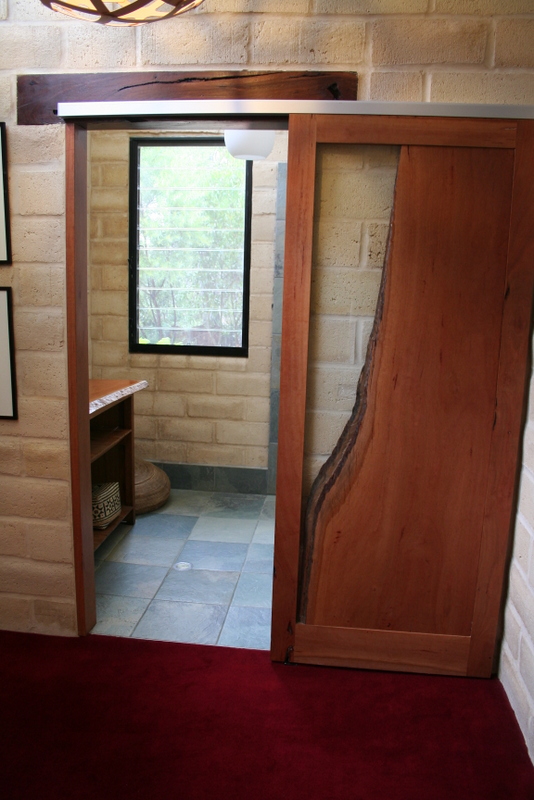
|

A large door can be mounted on a sliding track
|

On hinges a sold hardwood door is surprisingly easy to open and close
|
|
Front entrance door for home in Cammeray
|
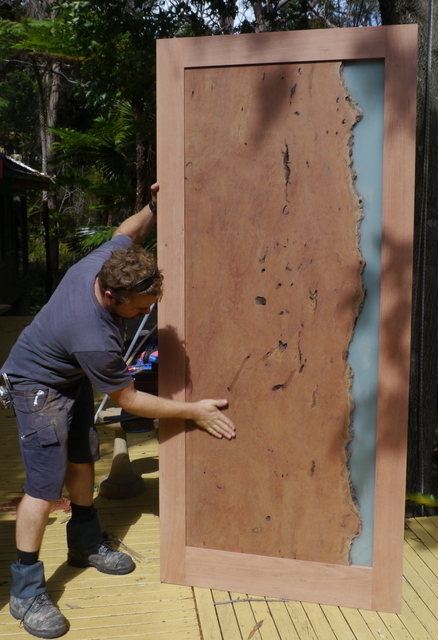 Frosted glass Frosted glass
|
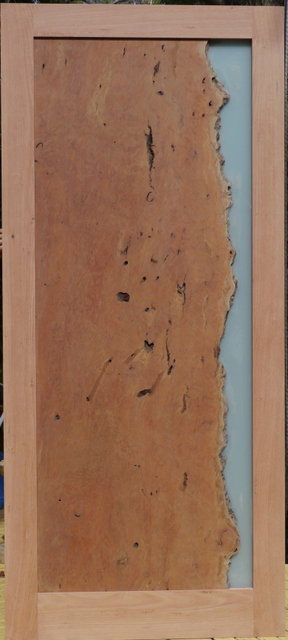 |
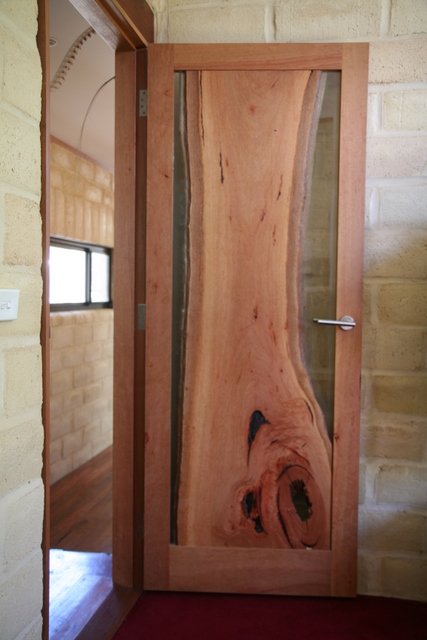 |
 |
 |
|

Colour acrylic
|
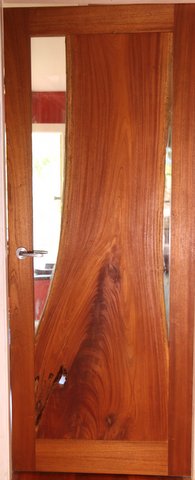
Australian red cedar makes a beautiful door
|

Mirror faced acrylic
|
|
![]()
Slab doors work as bi-folds. Not your usual door!
|
|
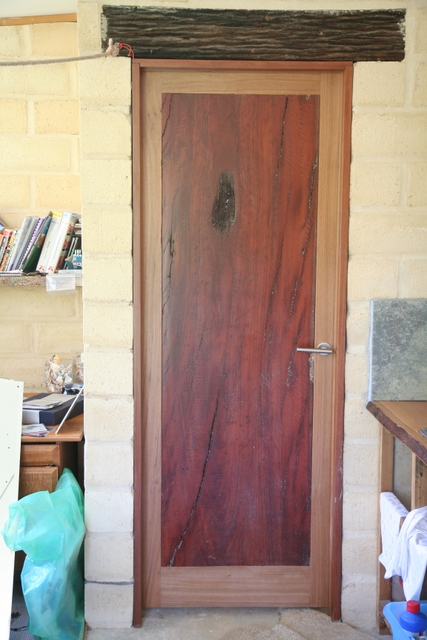 Solid slab door Solid slab door
|
|
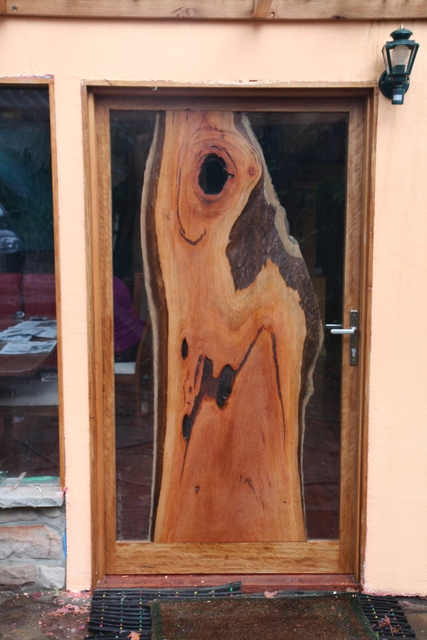
This slab at first look too bad, but the final door works well
|
Slabs for doors
|
|

Many of the slabs we mill ourselves. Trees blow down in storms, farmers have logs
lying around, they come from all over the place. Mostly we use the rail mill because
it can get into tight spots.
|
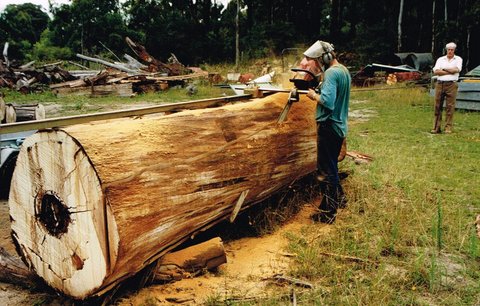
One person keeps tension on a rope and controls the rate of cutting by the sound of the motor. The other person holds the saw and keeps it on track. Important to keep out of the way of the blade.Especially the 6 ft one.
|
|

If we cut at a low angle it is faster and the cut is straighter.
|
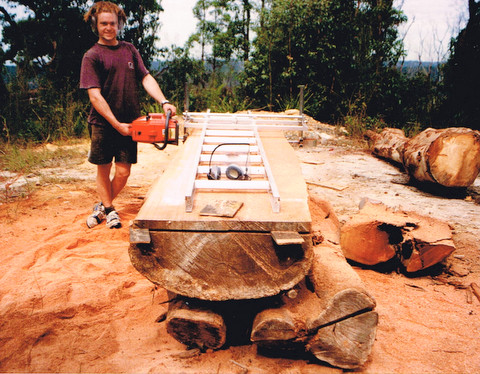
In the very early days we used an Alaskan mill. It uses a ladder as a straight edge, however it is too dangerous, when the chain breaks, the helper on the other end would be cut as the chain flies outwards.
|
|
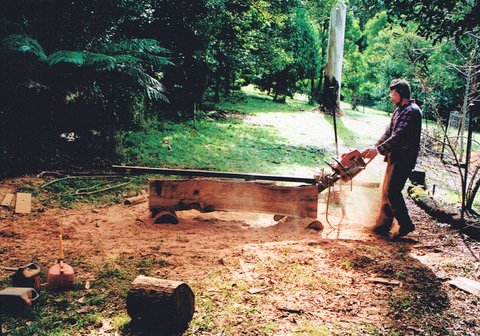
For doors the logs can be surprisingly small. A lot of setting up for little result.
|
This Morten Bay fig fell down in a local park and we bought
it from the tip. The danger is from cutting into bits of steel
that may have grown into the tree.
|
|

Seasoning is a slow process, it take a year per inch plus a year. So a 50 mm slab
takes 3 years. Many of our slabs were milled years ago when I was still at university
studying Industrial Design. The slabs were originally cut for making furniture.
|
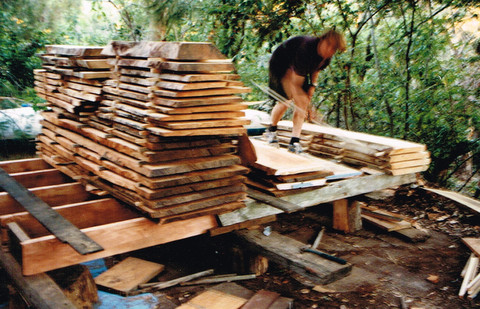
The racks must be 600 mm off the ground to allow air to flow freely. The rack must be straight within a mm or that much thickness will be lost as the slab is planed flat. Stickers between the slab must be of the same species to prevent staining. The ends of the logs must be sealed to reduce cracking.
|
|

Some of the slabs are too long to get into the workshop and have to be cut up at the
rack. A pleasant place to work.
|
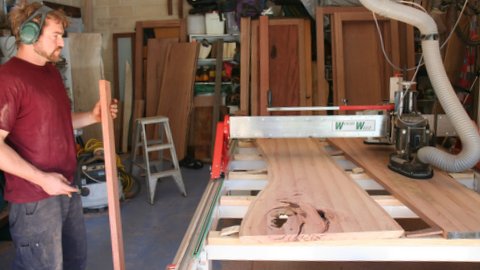 We flatten the slabs on our Wood Wiz We flatten the slabs on our Wood Wiz
|
|
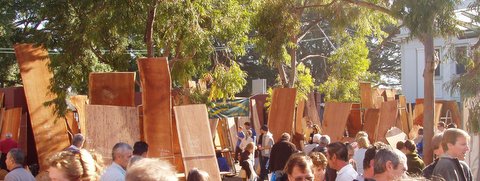
At timber shows saw millers bring their slabs and we get some great slabs this way but we end up with a lot of capital tied up in slabs "we'll use some day".
To see if a slab will make a door we put a mock up frame in front of it. At first this slab appeared too wild and rotten. however we ended up using it on the bi-fold door above. It can be hard to tell what will work or not. A lot depends on the client. Generally the imperfections are left untouched.
|

|